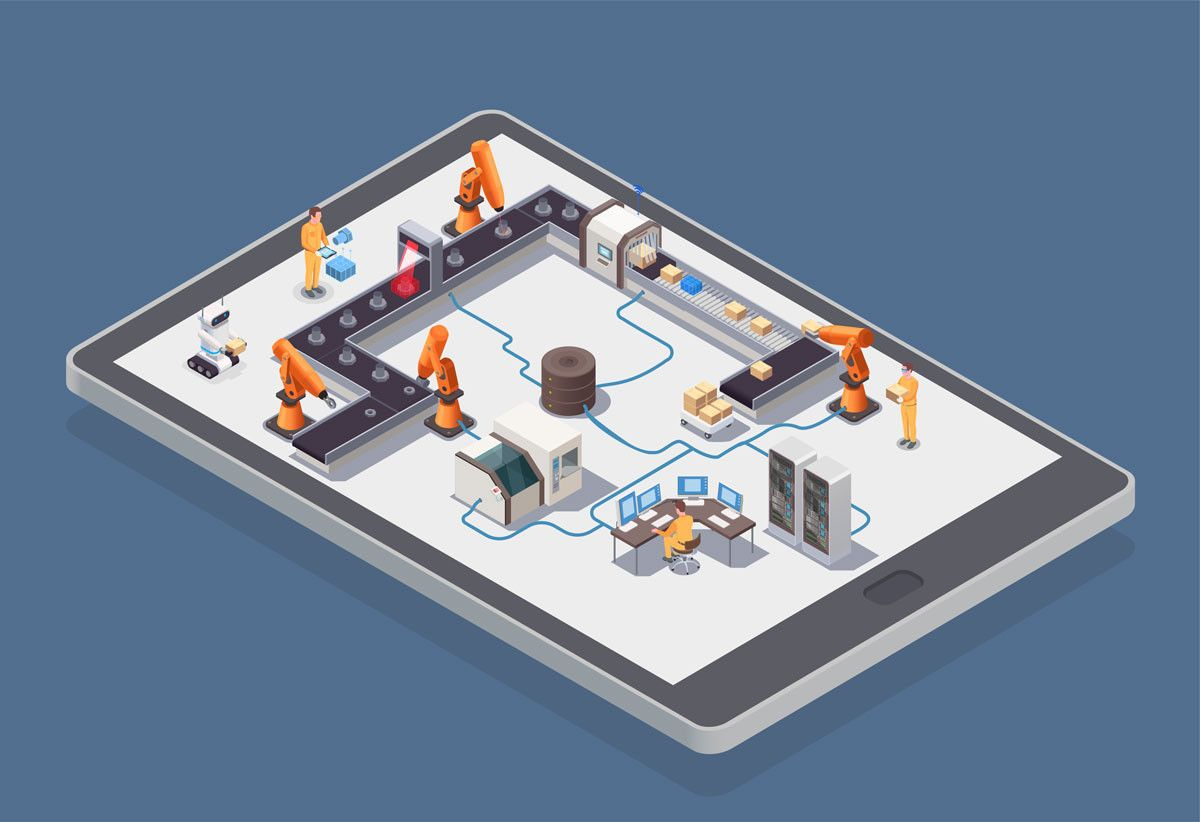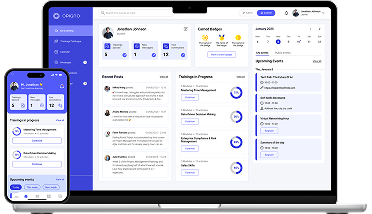As the workforce undergoes mass retirement and high turnover, the skilled labor shortage becomes more severe. Seasoned professionals exit the workforce, taking with them years of invaluable experience and expertise. At the same time, rapid technological advancements are transforming industries at a growing pace, so even experienced workers need to keep up with new tools, technologies, and methodologies.
Deloitte projects an unprecedented skilled labor shortage in the manufacturing industry, with 2.4 million jobs to be unfilled between 2018 and 2028.
This dual pressure of replacing lost expertise and continuously upskilling the workforce means that safety training has never been more critical not only for preventing workplace injuries but also for reinforcing related niche technical skills.
While hands-on practice is indispensable for certain safety aspects, many theoretical components — such as hazard communication, regulatory compliance, and safety protocols — can be effectively delivered through a Learning Management System (LMS). Moreover, e-learning can significantly improve occupational safety and health, as LMS offers a faster, cheaper, scalable, reliable, and consistent solution for a company's primary safety training challenges:
- tracking compliance,
- reducing administrative load,
- and engaging learners.

Tracking compliance
Keeping all employees up-to-date with the latest safety regulations and standards not only is a regulatory requirement but also essential for creating a safer work environment and minimizes the risk of legal liabilities.
Easy training updates
An LMS allows you to update digital training materials with just a few clicks to reflect the latest regulatory changes. A centralized system immediately delivers these updates to all relevant employees, maintaining uniformity, timeliness, and compliance.
Department- and role-based assignments
Different roles and departments have unique compliance requirements. An LMS can streamline this by automatically assigning appropriate training and assessments to each employee, ensuring they understand and retain critical safety information and meet all role-specific and departmental regulations.
Certification
As users complete required training modules, LMS can automatically generate and issue certificates, providing tangible proof of compliance. The certificates can then be stored, making it easy to track who has completed the required training and when renewals are needed.
Analytics and reporting
LMS platforms track employee progress, course completions, and assessment results. This data can be used to monitor compliance across the organization and generate comprehensive reports, reducing the time and effort needed for audit preparation.
LMS provides the tools needed to maintain continuous and transparent compliance and promote a culture of safety and accountability within the organization. As a bonus, LMS platforms can be used to sign and store digital safety acknowledgment forms, providing a verifiable record that employees have been informed about critical safety guidelines.
Managing administrative load
Streamlined administrative processes mean less time spent on paperwork and logistics and more — developing engaging and effective training content consistent across the organization.
Integration with HR systems
LMS can integrate with other HR and training systems, creating a unified platform with synchronized employee records and automating processes such as mandatory training enrollment based on employee roles or tracking of training completion, significantly reducing manual administrative tasks.
Reduced onboarding time
LMS ensures that the same high-quality training content is delivered to all employees, regardless of location. That way, new hires can complete mandatory safety training asynchronously, even before their start date. By front-loading training, the time required for in-person onboarding is minimized, allowing new employees to be productive sooner.
Cost and time savings
LMS reduces costs associated with in-person training sessions, such as travel, accommodation, and physical training materials. It also saves time spent on administrative tasks such as scheduling, tracking progress, grading assessments, and managing records.
Streamlining safety training with an LMS reduces the resources required for administrative tasks, ultimately leading to a safer and more efficient workplace.
Ensuring learner engagement
One-time instruction is not enough for employees to adopt safe work practices. They need continuous and engaging training to retain and apply the knowledge effectively, even under pressure. Overcoming this challenge requires innovative approaches to making training accessible and compelling.
Diverse learning formats
LMS supports various engaging learning formats and methods to cater to different learning styles and preferences, keeping learners motivated and invested.
Mobile learning allows employees to access training materials on the go, providing flexibility and convenience. This flexibility is particularly beneficial for deskless and remote workers or those who travel frequently. It ensures they can stay up-to-date with safety training without being tied to a specific location and easily fit training into their schedules.
Blended learning combines online and in-person training, offering a holistic approach to safety training. Online modules can provide foundational knowledge, while in-person sessions can focus on hands-on practice and complex topics that benefit from direct instruction and immediate feedback.
Asynchronous learning enables employees to complete training at their own pace, accommodating different schedules. This flexibility ensures that all employees, regardless of their workload or time constraints, can fully engage with the training material as soon as needed.
Simulations of real-life scenarios allow employees to apply their knowledge in a safe, controlled environment. This hands-on approach helps reinforce learning by providing practical experience with safety procedures and emergency response actions, leading to improved preparedness and confidence in handling actual incidents.
Gamified learning incorporates game elements like points, badges, and leaderboards to make learning fun and competitive. Its competitive aspects can drive employees to complete training modules and perform better, fostering a sense of achievement and encouraging continuous improvement.
Interactive content
Interactive content is crucial in transforming traditional safety training into a dynamic, engaging experience that captures learners' attention. Here's how you can use various interactive content methods to improve safety training outcomes:
Environment visualization, such as VR, AR, and 360-degree content that can be used on mobile or virtual reality headsets, places employees in a virtual replica of their actual work environment, helping them better understand the layout, including areas they can't normally see, and the specific safety measures required in different areas — the spatial and contextual aspects of safety protocols that are often difficult to relay through traditional methods without shutting down the facility. Plus, this makes the training more realistic and relatable, leading to higher engagement and retention rates.

Equipment and machinery presentations provide comprehensive instructions on the proper usage and safety measures for equipment and machinery without disassembling expensive equipment for training purposes. That way, employees learn the correct techniques and precautions for operating machinery, which reduces the risk of accidents and equipment damage. These presentations convey complex information in an easy-to-digest format, e.g., step-by-step guides, animated diagrams, and real-life video demonstrations, to help employees better understand and remember safety procedures.

Safety and compliance rules presented in videos, infographics, and animations are more accessible and easier to retain. These elements break down complex regulations into clear, manageable parts, enhancing comprehension. Interactive quizzes and scenarios in the presentations reinforce learning through immediate application and feedback.
Incident response protocols can benefit from step-by-step guides with a clear and concise action plan in an emergency. These guides can be interactive, allowing employees to virtually practice their response to various incidents in a controlled environment. This ensures that they are prepared and confident in their ability to handle real emergencies quickly and effectively, reducing the likelihood of injuries and accidents.
LMS enables organizations to leverage diverse learning formats, interactive content, and immersive experiences to make their safety program more effective, foster a culture of continuous learning, and build safety awareness within the organization.

Transform your safety training with Opigno LMS
Ensuring a safe work environment is no small feat, and safety training, being a fundamental part of it, is not something to be complacent about. Organizations should use all the help to make this process more efficient and effective while keeping costs manageable.
LMS is a perfect way to digitalize, standardize, and automate everything that can be digitalized, standardized, and automated, while making training accessible and more entertaining for learners. By leveraging advanced technologies and diverse learning methods, LMS provides a comprehensive solution that meets regulatory requirements and fosters a culture of safety consciousness and continuous improvement.
With Opigno LMS, you can transform your safety training program, making it more efficient, cost-effective, and impactful through:
- Easy updates for compliance to keep your training current with the latest regulations.
- Automated certificate issuance and management for streamlined compliance tracking.
- Learner progress monitoring and reporting to facilitate audits and continuous improvement.
- Interactive and engaging learning formats to keep your employees motivated and invested in their training.
Don't let the challenges of traditional training methods hinder your organization's commitment to safety. Contact us today to learn how Opigno LMS can revolutionize your safety training program and ensure a safer workplace for all.
Published on August 8, 2024
